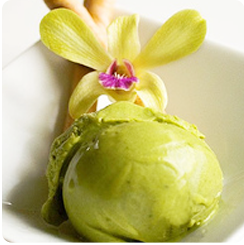Tea Ceremony

The history
The Japanese tea ceremony is an ancient ritual ultimately influenced by Zen Buddhism in which matcha, the powdered green tea, is prepared and served to a small group of guests. A tea ceremony can last between one and five hours, depending on the type of ceremony performed, the number of guests, and the types of meal and tea served. A tea practitioner must be familiar with all facets of tea preparation, as well as a wide range of other disciplines and traditional arts in addition to his or her school’s tea practices. These studies can last a lifetime.
History
Tea drinking had been introduced to Japan in the 9th century by Buddhist monks returning to their homeland from China, but it was only in the year 1191 that one named Eisai brought back a new form of tea: matcha. Matcha was first used in tea ceremony rituals in the Shaolin Buddhist monastery in China, but by the 13th century Japanese samurai warriors who followed the Zen Buddhist code were drinking the powdered tea, and the foundations of the tea ceremony were laid. By the 16th century, matcha drinking had fallen out of fashion in China. In Japan, however, it flourished.
Philosphy and Aesthetics
Under the influence of Zen Buddhism, the Japanese tea ceremony evolved its own aesthetic. In the 16th century, the tea master Sen no Rikyu, the most well-known historical figure in tea ceremony, developed the philosophy that every encounter we experience as human beings is an event which can never be recreated in exactly the same way again. “Ichigoichie”. Each experience therefore needs to be cherished and “tasted” fully. Such attention to the small things in life heightens our sense of harmony, respect, purity, and tranquility – the four aspects highlighted by Sen no Rikyu.
The aesthetic that grew from this is something the Japanese know as wabi-sabi. The word wabi suggests simple vitality, subtlety, or elegance. It can also refer to slight imperfections in an object which add uniqueness and interest to it. An old, leaning Tudor house might give a westerner the feeling of wabi. Sabi, on the other hand, is beauty which comes with age, when the life of the object can be seen, for example in the change in colour in the glaze of a cup over time as tea is repeatedly poured into it, or in any repairs that are made to an object over the years. That battered old leather jacket? Sabi.
Procedure
The tea ceremony of course involves the preparation and serving of tea, although there are different ceremonies depending on the “schools” which practise the tea ceremony, each with its own set rituals. The two main schools are the Omotesenke and Urasenke, and the following simplified description of ceremony procedure applies to both.
The host wears a kimono, while guests may wear kimono or formal clothes. Tea ceremonies may take place outside or inside, either in a tea room or a tea house, but can be performed nearly anywhere. The most formal of tea ceremonies will be performed indoors on woven straw tatami mats.
If the tea is to be served in a separate tea house, the guests will wait in a garden shelter until summoned. They must ritually wash their hands and remove their shoes when they enter the room or house. They then proceed to an alcove, where they might admire some calligraphy or flower arrangement, and are then seated on the tatami in order of status.
Guests may or may not be served a simple meal with sake, but there will be a serving of a small sweet or sweets. From these meals grew the tradition of kaiseki ryori, where every element of the meal from the courses to the utensils and condiments chosen must reflect and be in accordance with the season and the occasion. It is the haute cuisine of Japan.
Then the tea. Each utensil is ritually cleaned in a precise order. The utensils are placed in an exact arrangement. When this stage is complete, the host places matcha in the bowl and adds the appropriate amount of hot water, then whisks the tea. Conversation is minimal, with the guests relaxing and enjoying the atmosphere created by the sounds and smells around them, and the beauty and simplicity of the surroundings.
The bowl is served to the guest of honour, and bows are exchanged. The guest then bows to the second guest, and raises the bowl as a sign of respect to the host. You should not drink from the “front” of the bowl, so the guest rotates it, takes a sip, says the correct phrase, takes two or three more sips, wipes the rim, rotates the bowl, and passes it to the next guest with a bow. The procedure is repeated for each guest.
After everyone has drunk, the host cleans the utensils. The guests may be allowed to examine some of these, and this is done with extreme care and reverence, as some of the objects may be priceless antiques.
When the utensils are collected, the guests will leave the tea house, the host bowing from the door. The ceremony is over.
The Elements
There is no way to list the vast number of tea ceremony utensils and all their subtle variations here. The following is a brief list of the essentials:
- Chakin. This is a cloth used to ritually cleanse the tea bowl.
- Tea bowl (chawan). Tea bowls are available in a wide range of sizes and styles, depending on the ceremony. Irregularities and imperfections are prized and broken bowls are lovingly repaired (see the note on wabi-sabi above). Some are over 400 years old, and absolutely priceless.
- Tea caddy (cha-ire and natsume). Tea caddies may be short with a rounded bottom, usually made of wood, or tall and thin with ivory lids, though there is variation in shape, size and colour within the styles.
- Tea scoop (chashaku). Tea scoops are carved from a single piece of bamboo, ivory or wood and are used to scoop tea from the tea caddy into the tea bowl.
- Whisk (chasen). Tea whisks are carved from a single piece of bamboo. Old or damaged whisks are not just thrown away. Once a year they are taken to local temples and ritually burned. All the tools for the tea ceremony are handled with great care (sometimes only with gloves), and are thoroughly cleaned before and after each use and before storing.
- Fukusa. The fukusa is a cloth used for the ritual cleansing of the tea scoop and the tea caddy, and to handle hot kettle or pot lids.
- Ladle (hishaku). This is made of bamboo. It is used to transfer water to and from the iron pot and the fresh water container in certain ceremonies and for the ritual purification undergone by guests before entering the tea room.
- Tana. Tana means “shelves,” and this refers to all types of wooden or bamboo furniture used in the ceremony.

